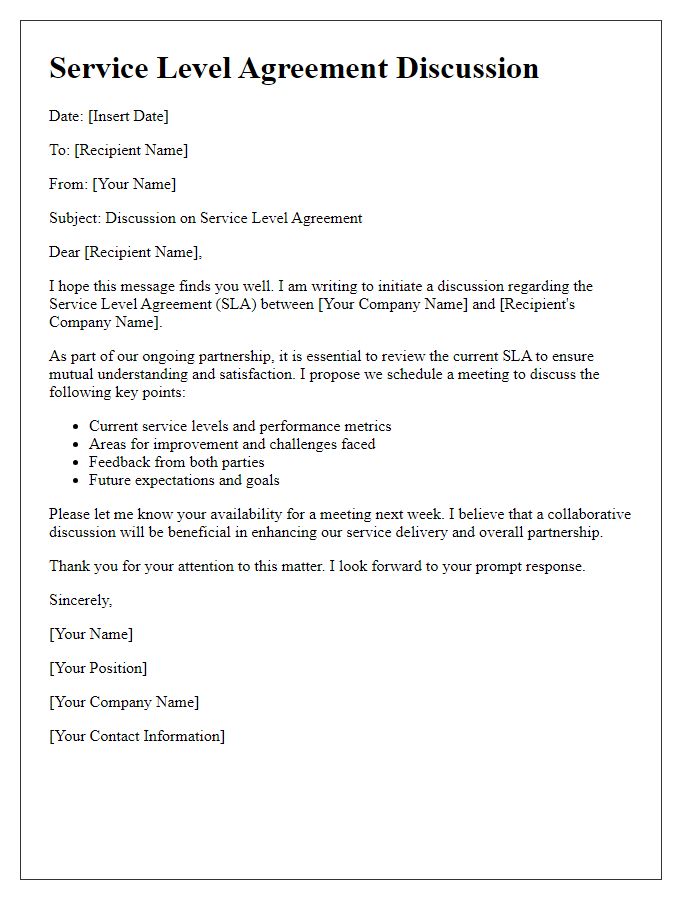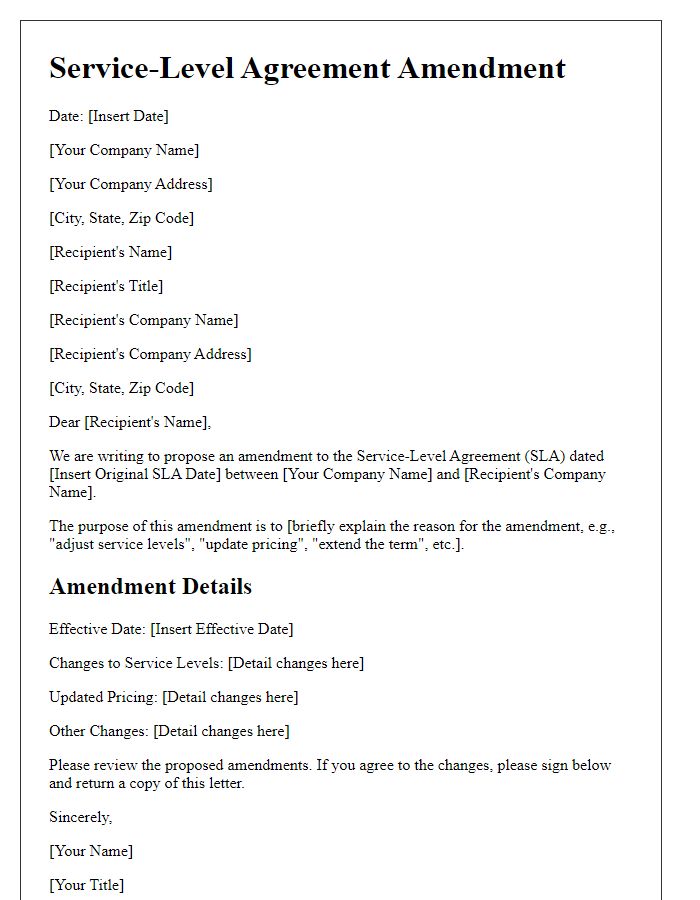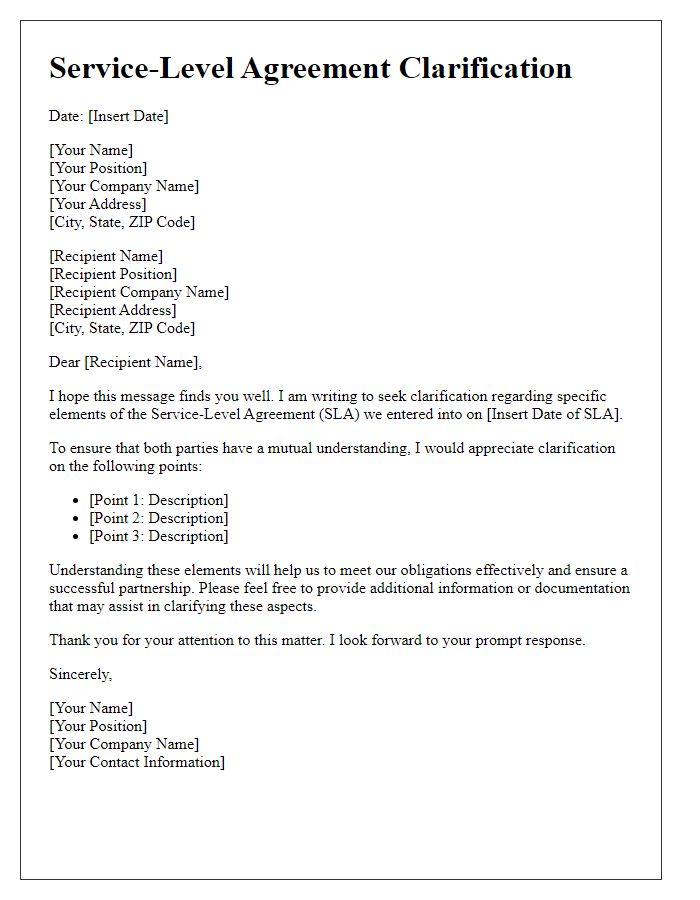When it comes to negotiating a service-level agreement (SLA), it's essential to approach the conversation with clarity and confidence. This document not only establishes expectations but also serves as a foundation for a successful partnership. Both parties should openly communicate their needs and priorities to ensure that the agreement reflects mutual understanding and commitment. Ready to dive deeper into crafting an SLA that works for you? Let's explore the key components together!

Clear objectives and purpose
A well-defined service-level agreement (SLA) serves as a crucial framework for managing expectations between service providers and clients. The primary objective remains to outline specific performance metrics, including uptime percentages (commonly 99.9% for cloud services), response times (averaging under two hours for critical incidents), and resolution times (typically within 24 hours for non-critical issues). This clarity supports both parties in understanding their roles and responsibilities. Additionally, including penalty clauses for unmet obligations can drive adherence to standards. Regular review meetings (quarterly or bi-annually) help reassess objectives, allowing for adjustments in response to changing business needs. Establishing communication channels enhances transparency, fostering a collaborative environment to address potential issues proactively.
Defined deliverables and performance metrics
A service-level agreement (SLA) outlines specific deliverables and performance metrics essential for measuring the effectiveness of services between a provider and a client. Clear definitions of deliverables include response times, service availability percentages, and issue resolution timelines, ensuring both parties are aligned on expectations. Performance metrics, such as key performance indicators (KPIs) like customer satisfaction scores or service uptime (targeted at 99.9% or higher), provide measurable benchmarks for evaluating service quality. Regular reviews, often outlined on a quarterly basis, allow for adjustments to these metrics based on evolving business needs or technological advancements. Establishing a data reporting framework enhances transparency, enabling stakeholders to monitor performance consistently and facilitate informed negotiations in future agreements.
Responsibilities and obligations
Service-Level Agreements (SLAs) outline responsibilities and obligations between service providers and clients, ensuring expectations are clear and measurable. Key components include uptime guarantees, typically expressed as a percentage, such as 99.9% availability for critical systems. Incident response times must be defined, often ranging from immediate (critical issues) to within 24 hours (non-critical). Performance metrics, like resolution timeframes for different severity levels, should be outlined to ensure accountability. Regular reporting intervals, such as monthly or quarterly reviews of service performance, establish transparency. Compliance with industry standards such as ISO 9001 or ITIL practices can enhance the credibility of commitments stated. Additionally, penalties for non-compliance, such as service credits or financial penalties, must be clearly articulated to ensure adherence to agreed standards.
Terms and conditions of service
Service-level agreements (SLAs) are critical for defining the expectations between service providers and clients regarding service quality, responsiveness, and accountability. Key components should include performance metrics, such as response time (e.g., 24/7 support with a response time of under 1 hour), and uptime guarantees (typically around 99.9% for hosting services), ensuring minimal disruption. Specific conditions concerning maintenance windows and notification periods for service outages should be articulated to prevent misunderstandings. Additionally, penalties for failing to meet SLA terms (such as service credits or financial compensation) are essential for enforcing accountability. The agreement should also outline dispute resolution processes, ensuring issues are addressed efficiently, and specify review periods to adapt to evolving needs or technologies, thereby fostering a proactive partnership.
Dispute resolution and exit strategies
Dispute resolution mechanisms in service-level agreements (SLAs) are crucial for maintaining effective partnerships between service providers and clients. Mediation processes often involve a neutral third-party mediator facilitating communication between disputing parties to reach an amicable resolution. Arbitration serves as an alternative, where an independent arbitrator makes binding decisions after reviewing evidence and hearing both sides. Specific time frames, such as resolution within 30 days of dispute notification, can streamline this process. Exit strategies are equally important, outlining procedures for terminating the agreement with minimal disruption. These strategies should specify notification periods, such as 60 days before termination, and detail the responsibilities for both parties in the transition phase, ensuring that data transfer and asset liquidation occur smoothly. Regular review intervals, every six months, can also ensure that both parties remain aligned, facilitating proactive adjustments to the agreement if necessary.













Comments